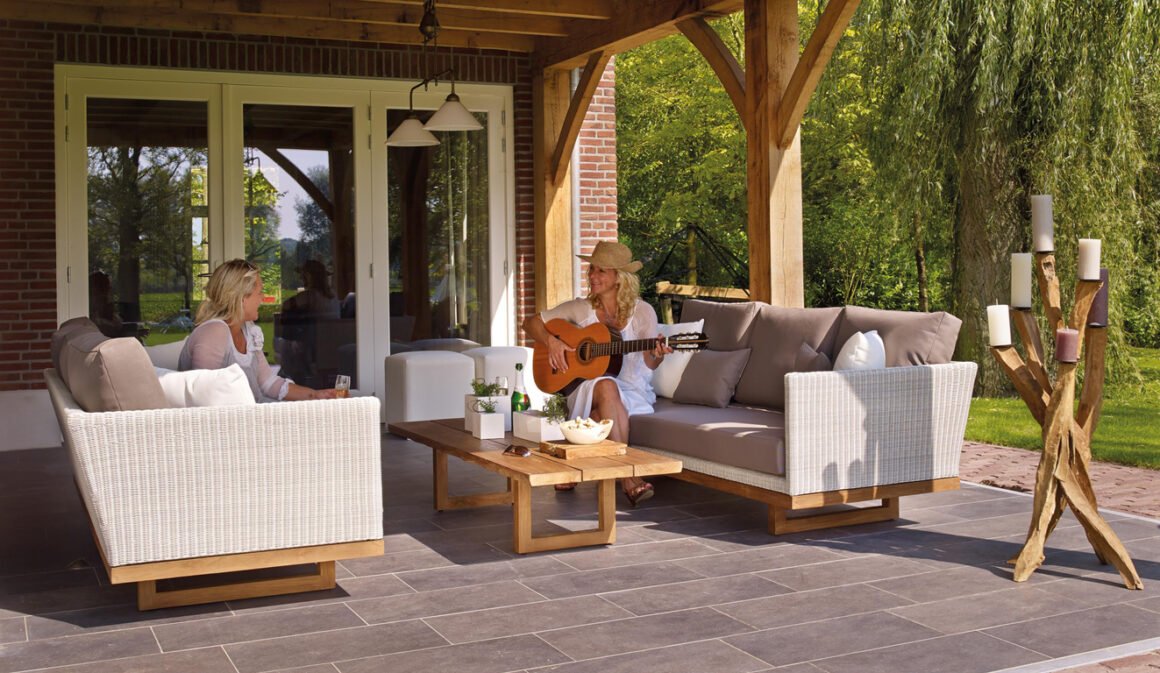Table of Contents Show
Creating an inviting and visually appealing outdoor space can transform how you enjoy your home and interact with the natural environment. With additions such as contemporary outdoor furniture or luxurious landscaping, patios, and outdoor spaces serve as extensions of our living areas, providing a seamless transition between indoors and outdoors.
With thoughtful design and creative touches, these areas can offer comfort, beauty, and a unique style. According to a report by the National Association of Realtors, upgrading outdoor spaces can not only enhance your quality of life but also potentially increase your property’s value. Let’s explore various ways to add dimension and character to your patio or outdoor space, making it more inviting and functional for relaxation and entertainment.
Introduction to Outdoor Spaces
Outdoor spaces are an essential part of a home, providing a sanctuary to unwind, entertain, and enjoy the beauty of nature. Adding dimension to these areas involves incorporating elements that enhance their aesthetic appeal and functionality.
From landscaping and lighting to furniture and decorative accents, each aspect is crucial in creating an outdoor space that reflects personal style while offering comfort and versatility. This guide will delve into practical and creative strategies to elevate your patio or outdoor space, transforming it into an oasis of tranquility and charm.
Planning Your Space
1. Assess Your Needs and Preferences:
- Space utilization: Consider how you plan to use your outdoor area. Whether it’s for dining, lounging, or entertaining, understanding your needs will guide your design choices.
- Style and ambiance: Determine the style and mood you wish to create. Do you prefer a modern, minimalist look or a cozy, rustic vibe? This will influence your selection of materials, colors, and decor.
2. Create a Cohesive Layout:
- Zoning: Divide your outdoor space into functional zones such as a dining area, lounge area, and garden space. This helps in maximizing usability and flow.
- Scale and proportion: Ensure furniture and features are in proportion to the size of your patio to avoid overcrowding or underutilization.
Landscaping and Garden Design
3. Incorporate Levels and Layers:
- Raised beds and planters: Adding raised beds or tiered planters introduces vertical interest and can help define different areas within your outdoor space. While residential landscape design can be limited by HOA standards, incorporating different levels allows you to stand out and add depth to your landscape.
- Varied plant heights: Use a mix of trees, shrubs, and ground covers to create depth and a layered effect in your garden.
4. Add Textural Contrast:
- Diverse plant selection: Incorporate a variety of plants with different textures and leaf sizes to create a dynamic and visually appealing landscape.
- Hardscaping elements: Utilize stones, pebbles, and wood chips to add texture and contrast to green spaces.
Lighting and Ambiance
5. Strategic Lighting Placement:
- Ambient lighting: Soft, overall lighting can create a warm and inviting atmosphere. Consider solar or LED lights for an energy-efficient solution.
- Task lighting: Ensure areas like dining tables or cooking spaces have adequate lighting for functionality.
6. Accentuate Features:
- Highlight plants and trees: Use spotlights to accentuate architectural plants or trees, adding drama and focal points to your garden.
- Decorative lights: String lights, lanterns, or candles can add a magical touch to evenings outdoors, enhancing the ambiance.
Furniture and Decor
7. Select Durable and Stylish Furniture:
- Material choices: Opt for materials that can withstand the elements, such as teak, metal, or synthetic rattan. Consider the climate in your area and choose furniture accordingly.
- Comfort is key: Ensure seating is comfortable with cushions and pillows made from outdoor-friendly fabrics.
8. Accessorize for Comfort and Style:
- Outdoor rugs: Add color and pattern with outdoor rugs that define seating areas and add a cozy touch.
- Decorative accents: Pillows, throws, and outdoor art can inject personality and color into your space, making it feel inviting.
Innovative Features
9. Water Features:
- Fountains or ponds: The sound of water can add a calming effect to your outdoor space. A small fountain or pond can serve as a stunning focal point.
10. Fire Features:
- Fire pits or fireplaces: A source of warmth and light, fire pits or outdoor fireplaces create a cozy ambiance and extend the usability of your space into cooler evenings.
Sustainable Practices
11. Eco-Friendly Materials and Designs:
- Recycled and sustainable materials: Choose furniture and decor from recycled plastics, reclaimed wood, or sustainable sources to minimize environmental impact.
- Water conservation: Implement a garden drip irrigation system and choose drought-resistant plants to reduce water usage.
Final Thoughts
Transforming your patio or outdoor space into a layered and dimensional retreat requires a blend of creativity, functionality, and personal style. By assessing your needs, incorporating diverse elements, and focusing on sustainability, you can create an outdoor oasis that not only enhances your home’s aesthetic but also contributes to your well-being.
Whether it’s through landscaping, lighting, furniture, or innovative features, each choice you make adds a unique layer to the overall ambiance of your space. Embrace the process and watch as your outdoor area evolves into a cherished extension of your home, offering endless opportunities for relaxation and enjoyment.










